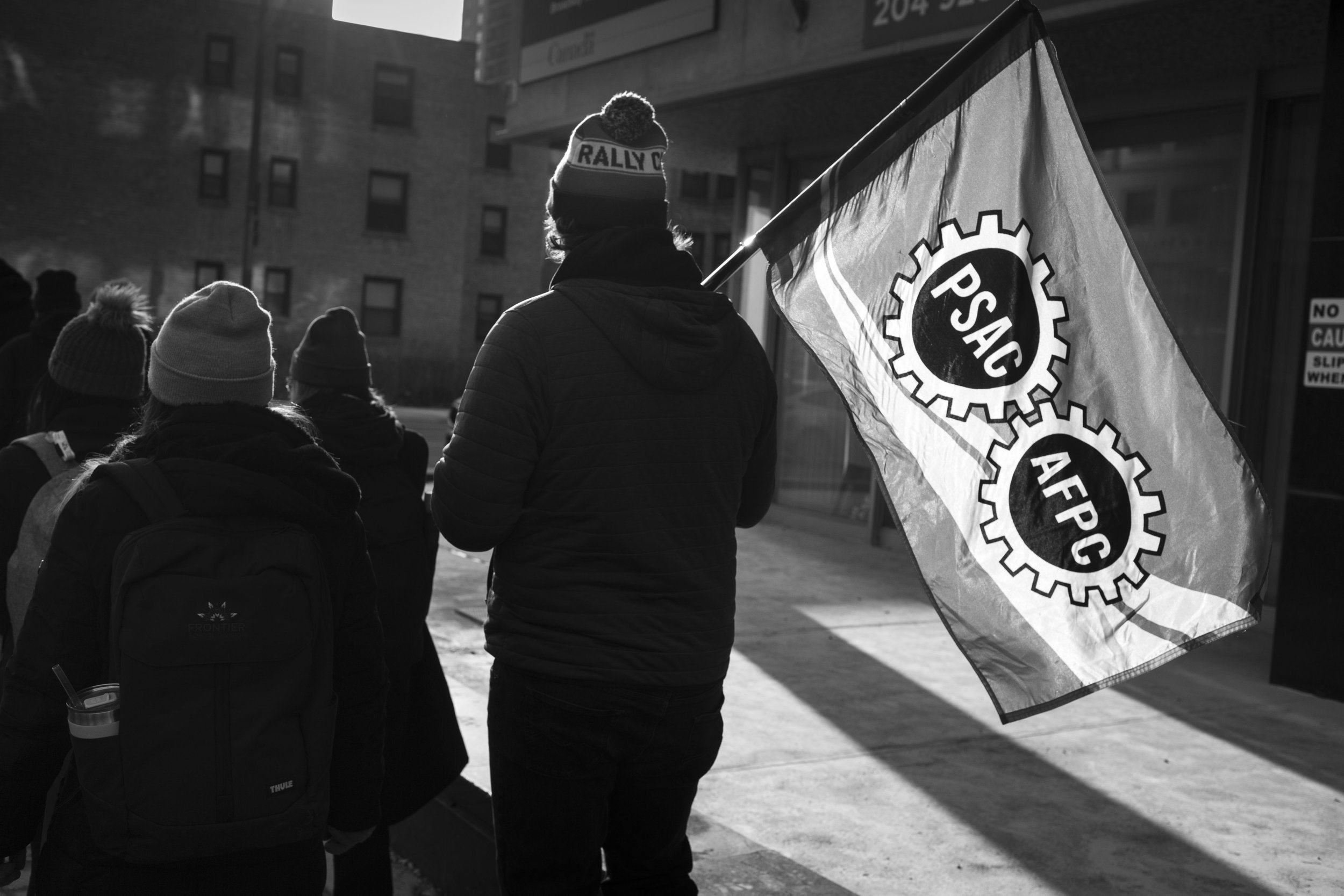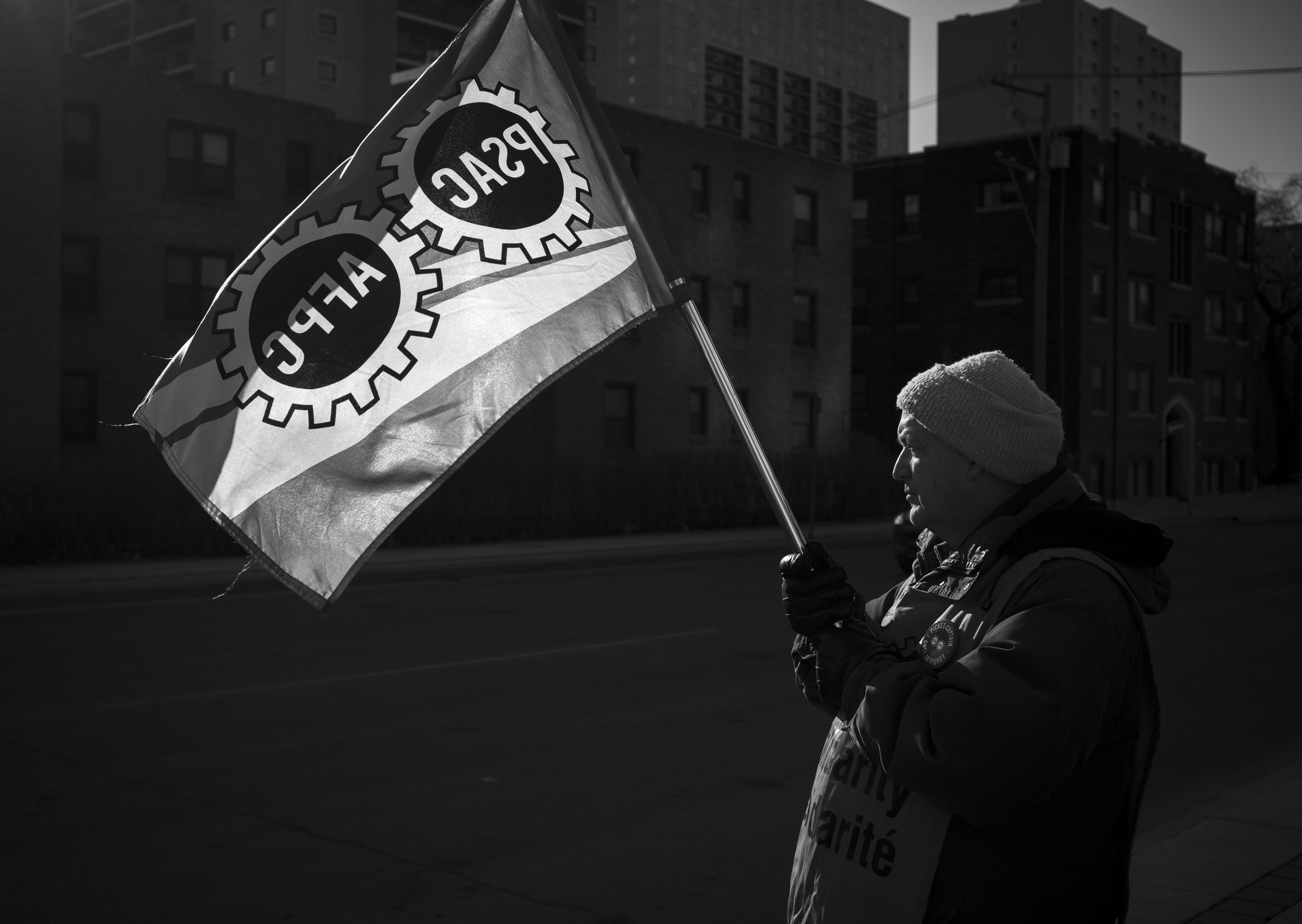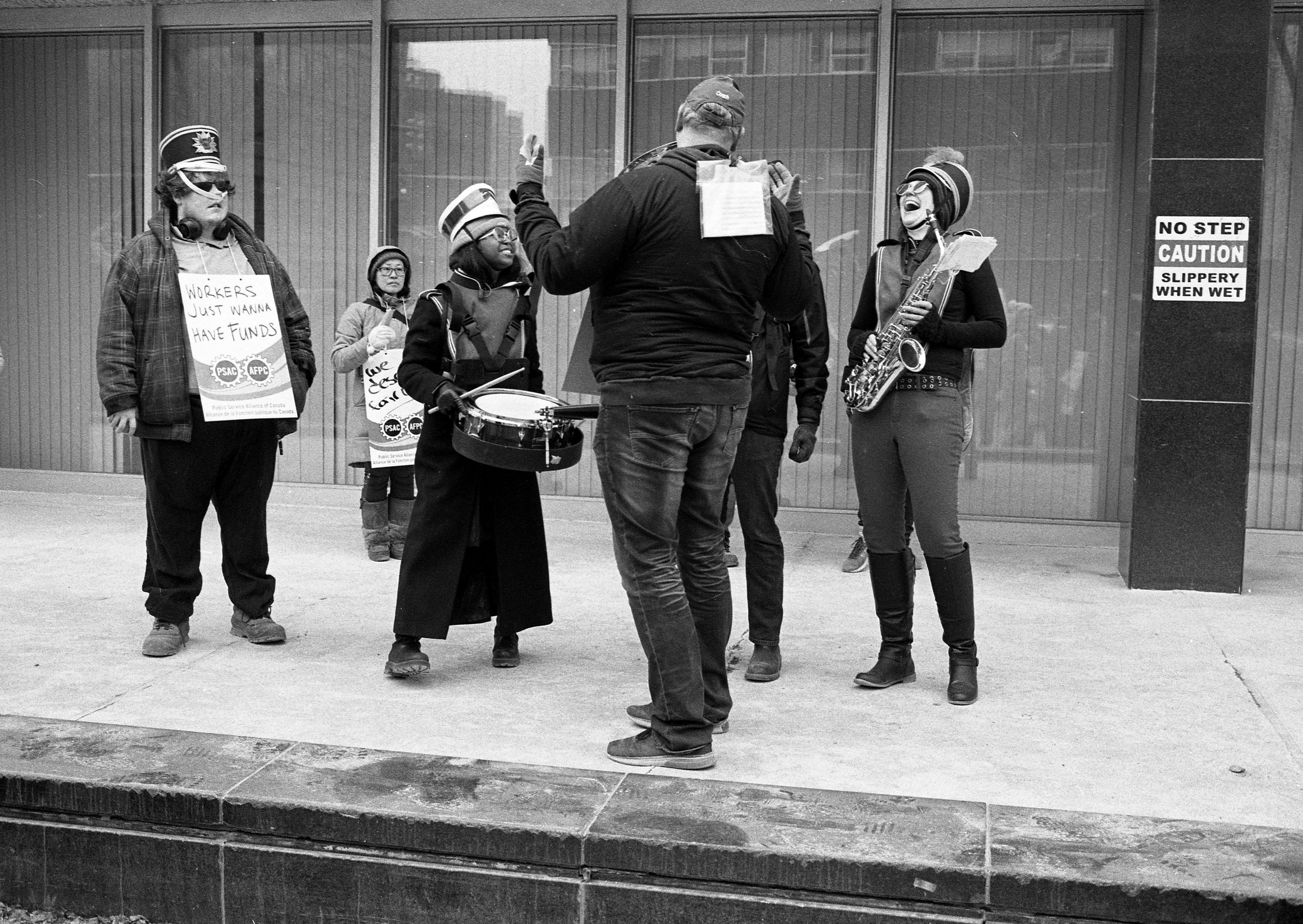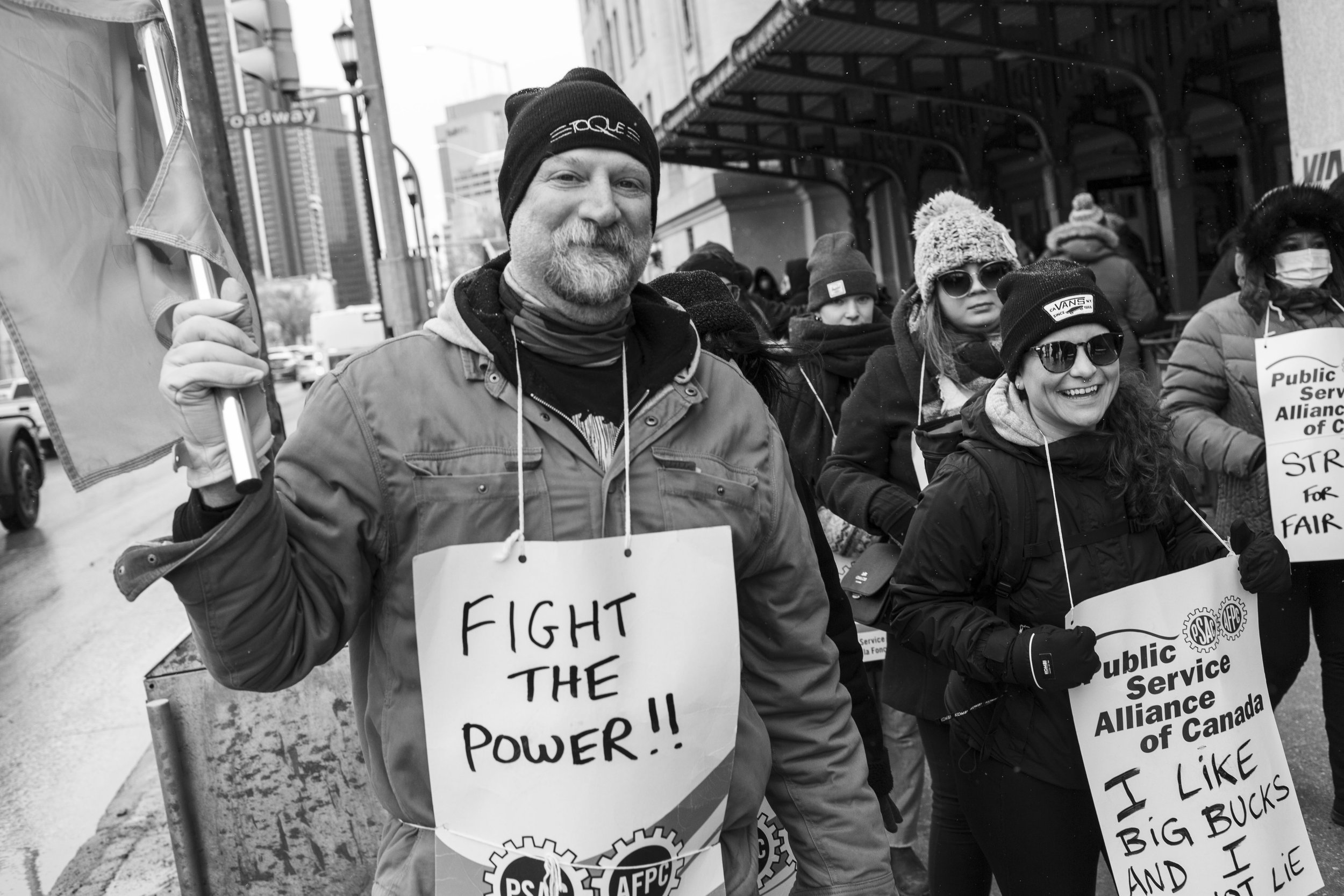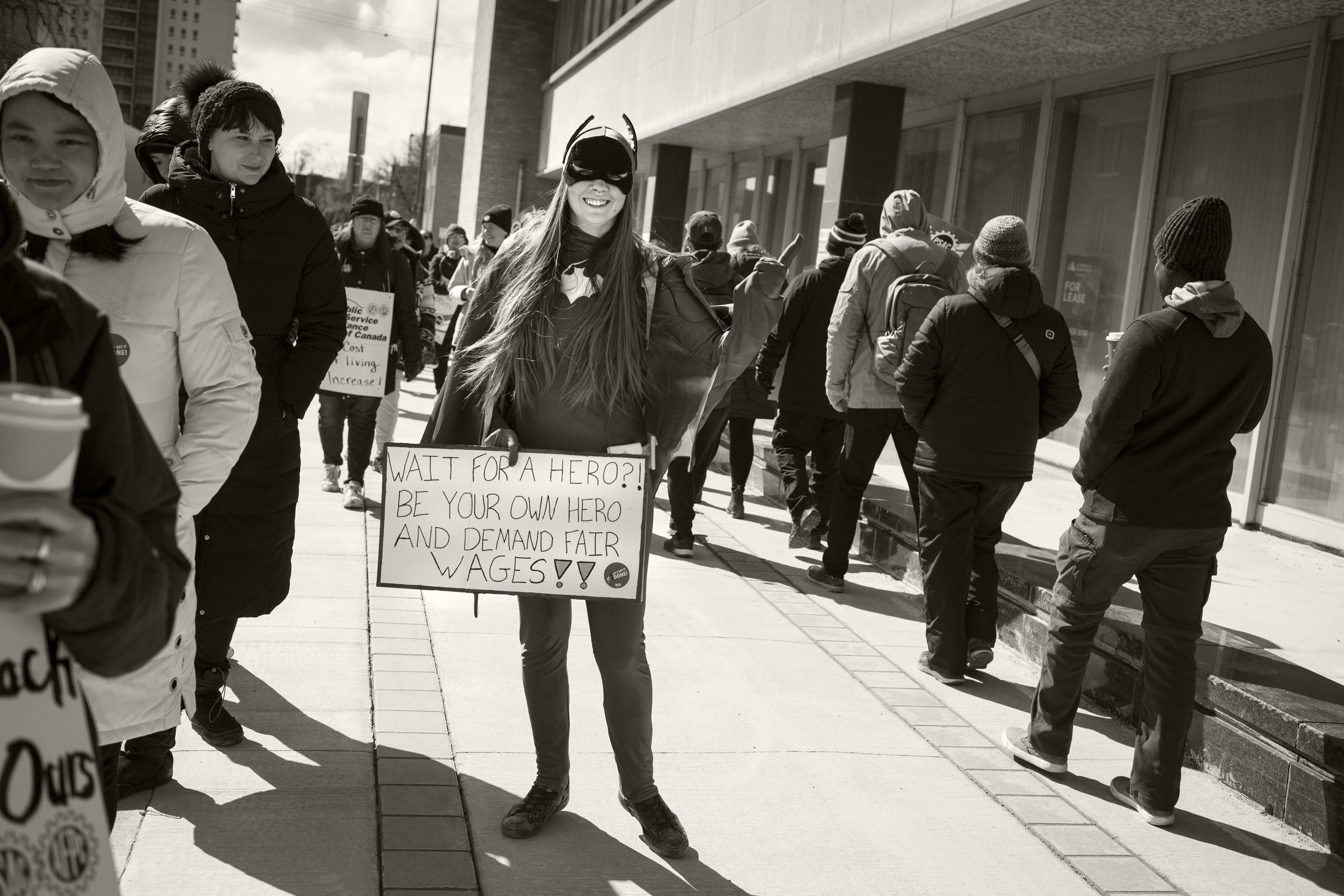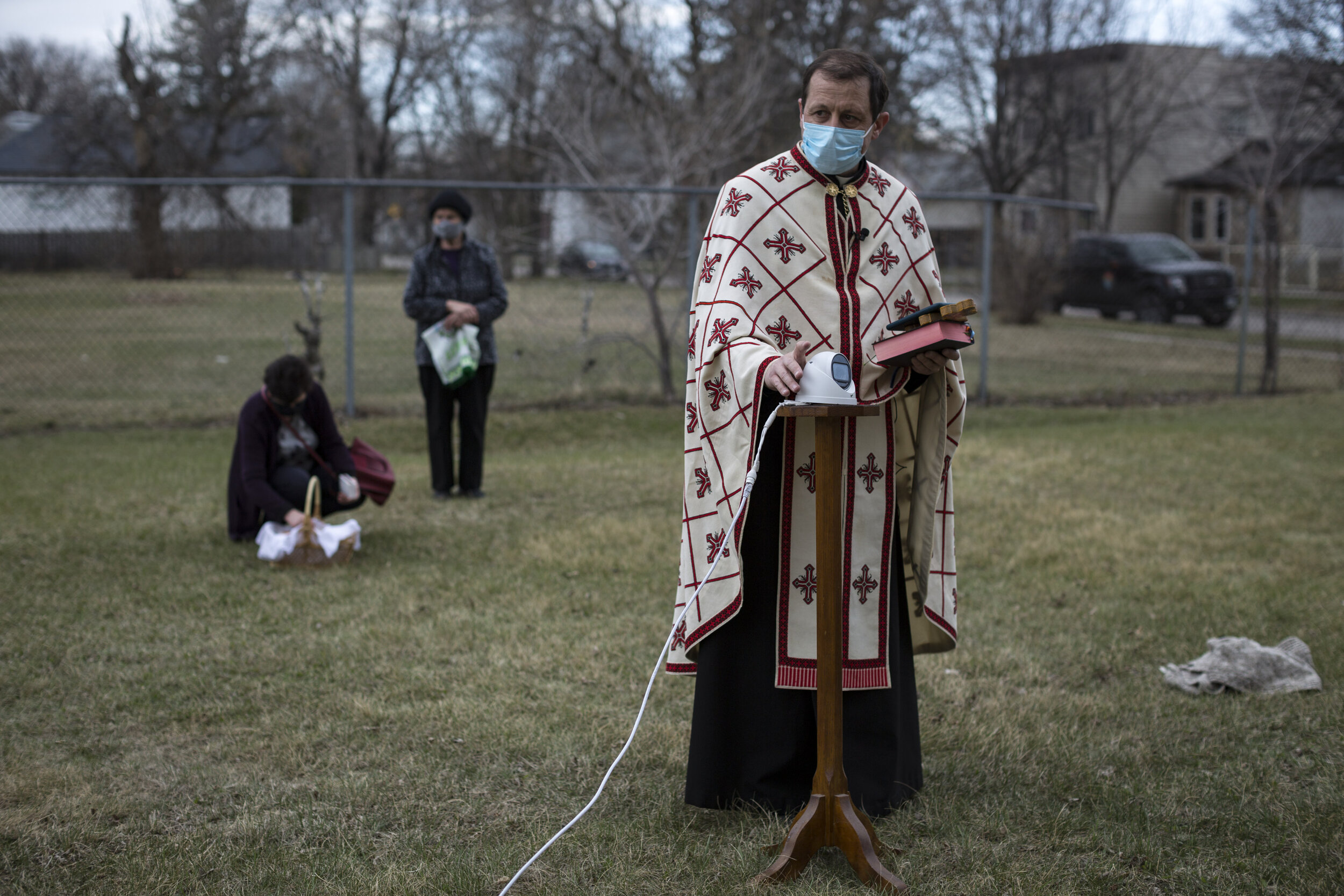Last week, the Public Service Alliance of Canada - the union that represents federal employees across a wide variety of services - called a national strike to press negotiations that have stalled for 2 years with the federal government. With approximately 155,000 people on strike across the country this is one of the largest labour actions in Canadian history.
I’m one of those people, joining my co-workers and many other colleagues in the federal service in walking a picket line. It’s been quite an adjustment, as for several decades I’ve photographed all kinds of strikes and labour actions but now I’m experiencing it all first-hand.
I still have a camera, however — it’s a welcome bit of familiarity and mental focus during this uncertain time. No matter what I do or where, I will always be a photographer. It’s a way to live life and make sense of all that one experiences, and this week is no exception.
Placard signs carried by striking workers await their next carrier at a downtown Winnipeg picket line.
Strings attached to placard signs are seen with a badge at a downtown Winnipeg strike location.

